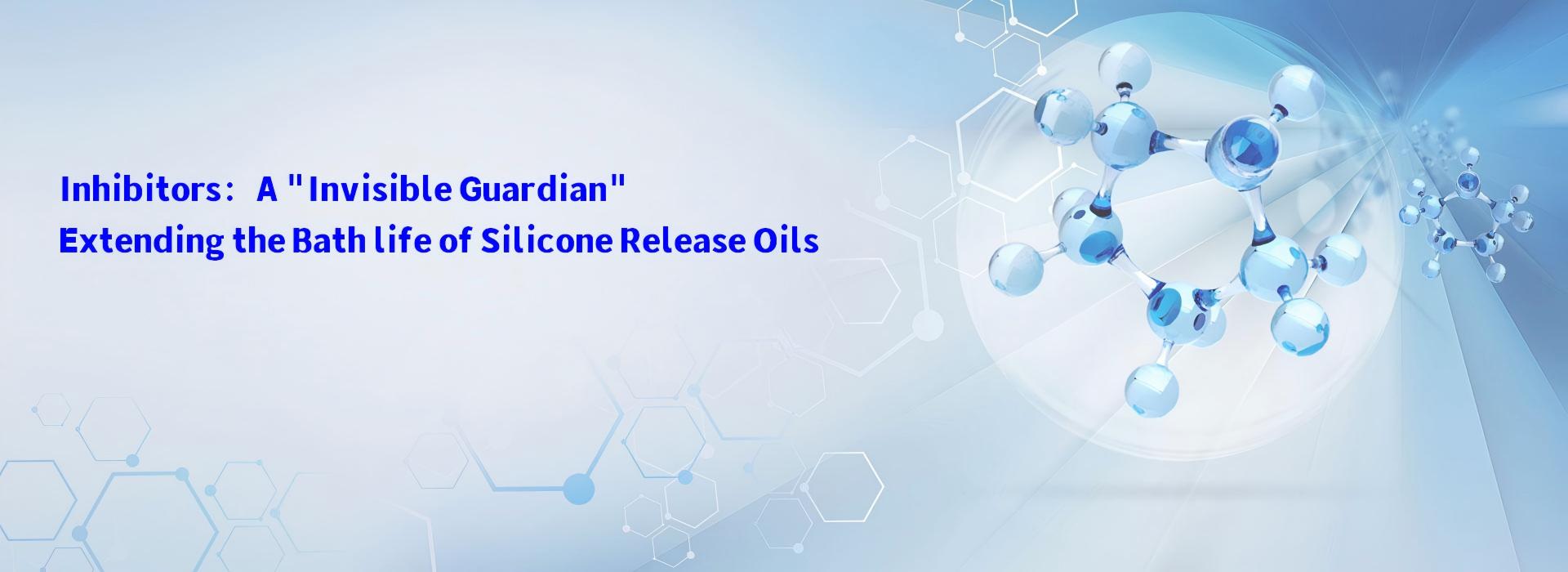Inhibitors: A "Invisible Guardian" Extending the Bath life of Silicone Release Oils
—Technological Innovation in the Organosilicon Industry Driving Efficient Production and Sustainable Transformation

In high-end manufacturing sectors like electronic component encapsulation, food packaging, and optical films, silicone release oil has become an indispensable material, lauded for its exceptional demolding properties, superior temperature resistance, and outstanding chemical stability. Yet, persistent challenges such as short bath life, frequent equipment shutdowns, and high production costs have long impeded industry growth. Recently, Organosilicon News learned from pioneering organosilicon material R&D that, through precise inhibitor regulation, the bath life of silicone release oil has attained a quantum leap—progressing from a mere "hour-level" endurance to robust "day-level" durability. Astonishingly, certain systems now maintain stability for over 24 hours even at temperatures of 25°C–30°C, ushering in seamless continuous production and sustainable green manufacturing.
The fundamental curing mechanism of silicone release oil relies on a platinum-catalyzed addition reaction between a crosslinker (hydrogen-containing silicone oil) and a base polymer (vinyl-terminated silicone oil). Traditional systems, however, are plagued by uncontrollable reaction rates, often triggering premature gelation within mere hours after mixing—resulting in bath clogging and defective products. Introducing inhibitors enables dynamic reaction control through an ingenious "molecular lock" mechanism:
Precision Control: Low-Temperature Inhibition, High-Temperature Activation
Alkynol-based inhibitors, such as 3,5-dimethyl-1-hexyn-3-ol, leverage their carbon-carbon triple bonds to form reversible coordinate bonds with platinum catalysts. This interaction firmly shackles catalytic activity at room temperature, effectively suppressing reactions. When heated above 140℃, these bonds dissociate, unleashing the catalyst for rapid, efficient curing. This smart thermal response ensures stability throughout coating and drying processes while enabling rapid curing at the final stage—a true dual-phase functionality.
Composite Inhibitors: Synergistic Performance Enhancement
Single inhibitors often grapple with intrinsic limitations like high volatility or poor compatibility. Recent breakthroughs effectively tackle these hurdles by combining alkynols with alkynoxy-functional silanes, like methyltris(1-methyl-2-propynyloxy)silane, producing synergistic and innovative composite formulations.Rigorous testing confirms these advanced systems restrict viscosity fluctuations to less than <3% over 8 hours and remarkably prolong gelation times fivefold in thin-film coating applications—effectively countering performance degradation induced by inhibitor evaporation.
High-Refractive-Index Specialized Inhibitors: Shattering Optical Performance Limits
Conventional inhibitors often compromise light transmittance or refractive index uniformity within demanding High-RI silicone oils. Siloxane-modified inhibitors, exemplified by GZ-617, dramatically lower surface tension. They deliver uncompromised inhibition efficacy at 140℃while safeguarding critical optical properties. One pioneering optical film manufacturer implementing this breakthrough technology realized a striking 12% surge in product yield, saving upwards of RMB 2 million annually per production line.
Inhibitor breakthroughs are propelling the cross-industry embrace of silicone release oils, elevating their role far beyond simple bath life extension to deliver sweeping supply chain efficiency gains and catalyze eco-friendly transformations.
Electronic Encapsulation: Boosting Capacity and Quality
In semiconductor packaging, silicone release oils effectively shield lead frame surfaces from adhesion. Traditional systems demanded frequent, hourly equipment cleaning due to their short bath life, capping daily production below 50,000 units per line. Long-acting inhibitor systems now dramatically prolong bath life to 12 hours, unlocking capacities exceeding 150,000 units daily while simultaneously curbing solvent emissions and mitigating occupational health hazards.
Food Packaging: Championing Safety and Sustainability
Food-grade silicone release oils must strictly adhere to FDA standards, yet traditional solvent-based systems are being phased out due to concerning VOC residues. Innovative next-generation waterborne systems, incorporating low-volatility inhibitors like PC-617, slash VOC emissions by a remarkable 90% while maintaining exceptional coating performance. This breakthrough is propelling the packaging industry's critical green transformation.
Optical Films: Mastering the Precision-Efficiency Equilibrium
For polarizers and brightness enhancement films, coating uniformity critically determines light transmittance. Long-acting inhibitors dramatically reduce equipment shutdowns, effectively preventing costly thickness variations triggered by temperature fluctuations. One manufacturer successfully boosted product yield from 85% to an impressive 92%, saving over RMB 3 million annually in material costs per production line.
III. Future Trends: Intelligence and Sustainability Converge
As material science converges with smart manufacturing, inhibitor technologies are rapidly evolving toward unprecedented precision, intelligence, and sustainability:
Smart-Responsive Inhibitors
Researchers are developing revolutionary inhibitors sensitive to environmental cues such as pH, light, or specific chemicals, to achieve unprecedented precision and on-demand reaction control. For instance, UV-triggered inhibitors incorporated into the release layer of photoresist enable pinpoint curing timing, dramatically improving accuracy in advanced semiconductor manufacturing.
Bio-Based Inhibitors: Green Alternatives
Responding to growing demand for eco-friendly solutions and to reduce petrochemical reliance, inhibitors derived from renewable resources—such as vegetable oils and sugars—are gaining prominence. A castor oil-derived inhibitor achieves a remarkable 80% biodegradability while maintaining high performance, readily meeting stringent EU REACH regulations.
Digital Process Optimization
Furthermore, AI-powered formulation systems now analyze complex inhibitor dosage, temperature, and bath life parameters to enable dynamic, real-time recipe adjustments. A global chemical leader recently launched an intelligent platform slashing custom product development cycles from 3 months down to just 2 weeks.
Conclusion
From passive reaction control to proactive material engineering, innovations in inhibitors are fundamentally reshaping silicone release oil applications. These potent molecular agents function not merely as bath life extenders but as powerful catalysts, driving manufacturing upgrades toward unprecedented efficiency, precision, and sustainability. As global industry synchronizes with carbon neutrality objectives and navigates supply chain restructuring, this technology will persistently unlock profound transformative potential for advanced manufacturing.